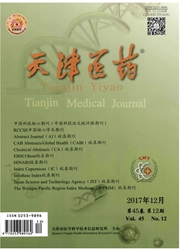

 中文摘要:
中文摘要:
椎间盘疾病是一组病因复杂、临床症状多样、保守治疗效果差的临床疾病的总称。传统的治疗方法包括保守治疗、局部注射及开放手术等。近年来,随着脊柱微创技术的进步,其临床疗效受到充分肯定。等离子射频消融髓核成形术(CN)自临床开展以来主要应用于包容性椎间盘突出的治疗,因其适应证窄、疗效不确定等原因临床开展并不顺利。目前大量文献报道了CN在椎间盘疾病中的应用,并对其工作原理、手术安全性、适应证及临床疗效等方面进行了分析和扩展,对其在临床方面的广泛推广使用具有重要意义。本文就CN在椎间盘疾病中应用的研究现状进行综述。
 英文摘要:
英文摘要:
The intervertebral disc disease is a group of clinical diseases with complex etiology,various clinicalsymptoms and poor conservative treatment effect.The traditional treatment methods include conservative treatment,localinjection and open surgery.In recent years,minimally invasive spine surgery has made great progress and development,andits clinical effect has been fully affirmed.Coblation nucleoplasty(CN)has been mainly used in the treatment of containeddisc herniation since it has been used in clinical treatment.Its application is not favorable because of narrow indications,uncertain clinical efficacy and other reasons.At present,the application of CN in the intervertebral disc diseases has beenreported in many literatures,and its working principle,operation safety,indications and efficacy have been analyzed andextended.Those literatures play an important role in its clinical application.Therefore,in this paper,the application status ofCN in the intervertebral disc diseases is reviewed.
 同期刊论文项目
同期刊论文项目
 同项目期刊论文
同项目期刊论文
 期刊信息
期刊信息
